Compatibility Review for Object Detection Enhancement through Super-Resolution
- PMID: 38894125
- PMCID: PMC11174808
- DOI: 10.3390/s24113335
Compatibility Review for Object Detection Enhancement through Super-Resolution
Abstract
With the introduction of deep learning, a significant amount of research has been conducted in the field of computer vision in the past decade. In particular, research on object detection (OD) continues to progress rapidly. However, despite these advances, some limitations need to be overcome to enable real-world applications of deep learning-based OD models. One such limitation is inaccurate OD when image quality is poor or a target object is small. The performance degradation phenomenon for small objects is similar to the fundamental limitations of an OD model, such as the constraint of the receptive field, which is a difficult problem to solve using only an OD model. Therefore, OD performance can be hindered by low image quality or small target objects. To address this issue, this study investigates the compatibility of super-resolution (SR) and OD techniques to improve detection, particularly for small objects. We analyze the combination of SR and OD models, classifying them based on architectural characteristics. The experimental results show a substantial improvement when integrating OD detectors with SR models. Overall, it was demonstrated that, when the evaluation metrics (PSNR, SSIM) of the SR models are high, the performance in OD is correspondingly high as well. Especially, evaluations on the MS COCO dataset reveal that the enhancement rate for small objects is 9.4% higher compared to all objects. This work provides an analysis of SR and OD model compatibility, demonstrating the potential benefits of their synergistic combination. The experimental code can be found on our GitHub repository.
Keywords: deep learning; face recognition; neural networks; object detection; super-resolution.
Conflict of interest statement
Author Daehee Kim was employed by the company NAVER Cloud Corp. Author Sungmin Lee was employed by the company SK Telecom. The remaining authors declare that the research was conducted in the absence of any commercial or financial relationships that could be construed as a potential conflict of interest.
Figures
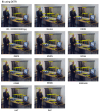
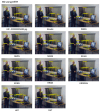
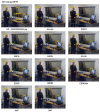
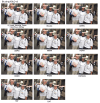
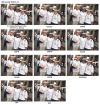
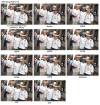






















Similar articles
-
Leveraging retinanet based object detection model for assisting visually impaired individuals with metaheuristic optimization algorithm.Sci Rep. 2025 May 8;15(1):15979. doi: 10.1038/s41598-025-99903-y. Sci Rep. 2025. PMID: 40341297 Free PMC article.
-
OD-YOLO: Robust Small Object Detection Model in Remote Sensing Image with a Novel Multi-Scale Feature Fusion.Sensors (Basel). 2024 Jun 3;24(11):3596. doi: 10.3390/s24113596. Sensors (Basel). 2024. PMID: 38894387 Free PMC article.
-
A novel hybrid generative adversarial network for CT and MRI super-resolution reconstruction.Phys Med Biol. 2023 Jun 23;68(13). doi: 10.1088/1361-6560/acdc7e. Phys Med Biol. 2023. PMID: 37285848
-
Survey and Performance Analysis of Deep Learning Based Object Detection in Challenging Environments.Sensors (Basel). 2021 Jul 28;21(15):5116. doi: 10.3390/s21155116. Sensors (Basel). 2021. PMID: 34372351 Free PMC article. Review.
-
Research Challenges, Recent Advances, and Popular Datasets in Deep Learning-Based Underwater Marine Object Detection: A Review.Sensors (Basel). 2023 Feb 10;23(4):1990. doi: 10.3390/s23041990. Sensors (Basel). 2023. PMID: 36850584 Free PMC article. Review.
References
-
- Deng J., Dong W., Socher R., Li L.J., Li K., Fei-Fei L. ImageNet: A Large-Scale Hierarchical Image Database; Proceedings of the IEEE Conference on Computer Vision and Pattern Recognition; Miami, FL, USA. 20–25 June 2009.
-
- Everingham M., Van Gool L., Williams C.K., Winn J., Zisserman A. The pascal visual object classes (voc) challenge. Int. J. Comput. Vis. 2010;88:303–338. doi: 10.1007/s11263-009-0275-4. - DOI
-
- Lin T.Y., Maire M., Belongie S., Hays J., Perona P., Ramanan D., Dollár P., Zitnick C.L. Computer Vision—ECCV 2014, Proceedings of the 13th European Conference, Zurich, Switzerland, 6–12 September 2014. Springer; Cham, Switzerland: 2014. Microsoft COCO: Common objects in context; pp. 740–755.
-
- Tan M., Pang R., Le Q.V. Efficientdet: Scalable and efficient object detection; Proceedings of the IEEE Conference on Computer Vision and Pattern Recognition; Seattle, WA, USA. 13–19 June 2020; pp. 10781–10790.
-
- Anwar A., Raychowdhury A. Masked Face Recognition for Secure Authentication. arXiv. 20202008.11104
Publication types
Grants and funding
LinkOut - more resources
Full Text Sources
Research Materials
Miscellaneous

